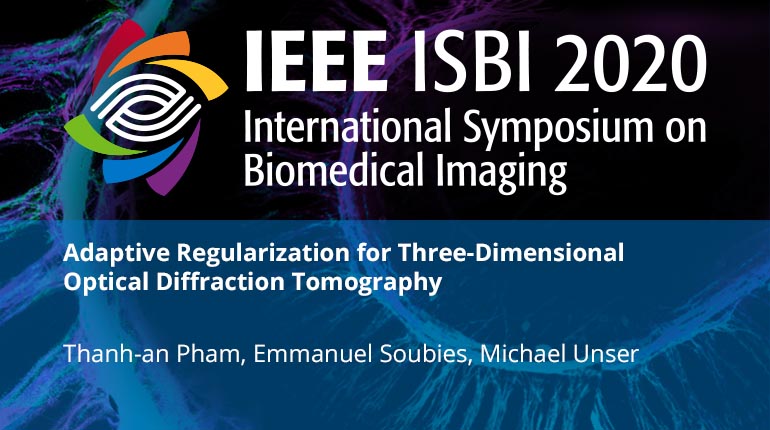
Already purchased this program?
Login to View
This video program is a part of the Premium package:
Adaptive Regularization for Three-Dimensional Optical Diffraction Tomography
- IEEE MemberUS $11.00
- Society MemberUS $0.00
- IEEE Student MemberUS $11.00
- Non-IEEE MemberUS $15.00
Adaptive Regularization for Three-Dimensional Optical Diffraction Tomography
Optical diffraction tomography (ODT) allows one to quantitatively measure the distribution of the refractive index of the sample. It relies on the resolution of an inverse scattering problem. Due to the limited range of views as well as optical aberrations and speckle noise, the quality of ODT reconstructions is usually better in lateral planes than in the axial direction. In this work, we propose an adaptive regularization to mitigate this issue. We first learn a dictionary from the lateral planes of an initial reconstruction that is obtained with a total-variation regularization. This dictionary is then used to enhance both the lateral and axial planes within a final reconstruction step. The proposed pipeline is validated on real data using an accurate nonlinear forward model. Comparisons with standard reconstructions are provided to show the benefit of the proposed framework.
Optical diffraction tomography (ODT) allows one to quantitatively measure the distribution of the refractive index of the sample. It relies on the resolution of an inverse scattering problem. Due to the limited range of views as well as optical aberrations and speckle noise, the quality of ODT reconstructions is usually better in lateral planes than in the axial direction. In this work, we propose an adaptive regularization to mitigate this issue. We first learn a dictionary from the lateral planes of an initial reconstruction that is obtained with a total-variation regularization. This dictionary is then used to enhance both the lateral and axial planes within a final reconstruction step. The proposed pipeline is validated on real data using an accurate nonlinear forward model. Comparisons with standard reconstructions are provided to show the benefit of the proposed framework.
 Cart
Cart Create Account
Create Account Sign In
Sign In





